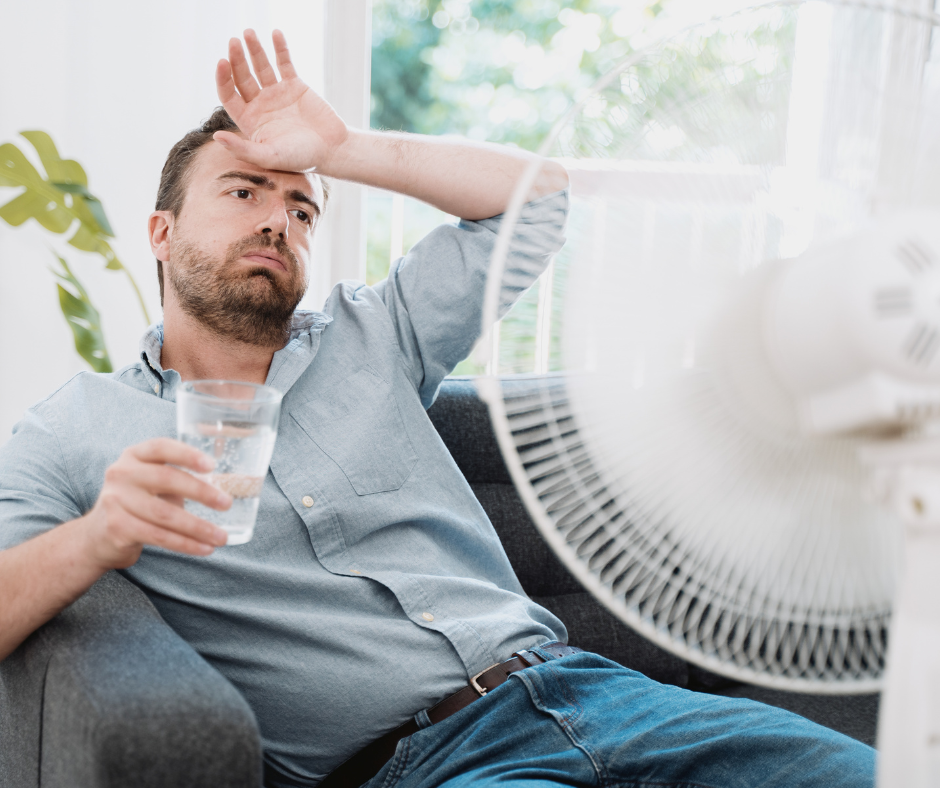
Over the July 4th holiday weekend, residents across North Carolina and the country experienced record-breaking heat. I spent the weekend slathered in sunscreen, playing pickleball, and then cooling down in my community pool. When the summer temperatures reach the 90s, I like to keep some frozen bandanas in my freezer to put on when I walk my dog or am going to be active outside. I can put these on myself and my dog. The bandana will quickly thaw but it has a nice cooling effect for your neck.
As a younger adult, I often don’t think about how serious the heat can be, but with record-breaking temperatures for multiple days, it is becoming increasingly important to be smart about the heat no matter your age.
In the US, extreme heat kills more people than any other weather hazard. Anyone can develop a heat-related illness but older adults and young children are typically the most vulnerable. Heat illness ranges in severity from mild heat exhaustion to life-threatening heatstroke. Heatstroke has a high mortality rate; even if you recover, there can be lingering effects. It is now believed that heatstroke is similar to a concussion–it creates susceptibility to future heat and immune diseases. 1
There are two types of heatstroke, classic and exertional. Classic heatstroke is caused by passive heating from your environment (think during a heat wave). This type of heatstroke is more common in older adults and younger children. Exertional heatstroke is more common in younger adults–particularly athletes and military–and happens when we physically exert ourselves with strenuous activity in hot weather.
Heat Exhaustion
- Dizziness
- Fatigue
- Nausea
- Headache
- No dramatic increase in core body temperature
Heatstroke
- Core body temperature above 104 Fahrenheit
- Severe dysfunction of the central nervous system
- Confusion
- Dizziness
- Unconsciousness
- Multiorgan injury
Tips for Staying Cool2
- Drink plenty of water even if you don’t feel thirsty.
- Schedule outdoor time earlier or later in the day when the temperature is cooler.
- Get out of the heat, even for a few hours (preferably in air conditioning).
- Don’t exercise strenuously outdoors alone.
- Pace your activity. Start slow and pick up the pace gradually.
- Take cool showers or baths to cool down.
- Apply ice-wrapped towels to the neck and extremities.
- If you suspect heat illness seek medical attention right away.
- Why heatstroke is dangerous and how to prevent it – The Washington Post. https://www.washingtonpost.com/wellness/2023/07/06/heatstroke-exercise-brain-hot-weather/?utm_source=newsletter&wpsirc=nl_wellbeing&utm_medium=email&utm_campaign=wp_wellbeing. Accessed Jul 7, 2023.
- Extreme heat. Centers for Disease Control and Prevention Web site. https://www.cdc.gov/nceh/features/extremeheat/index.html. Updated 2022. Accessed Jul 7, 2023.
Don’t miss another great blog: Subscribe Now
